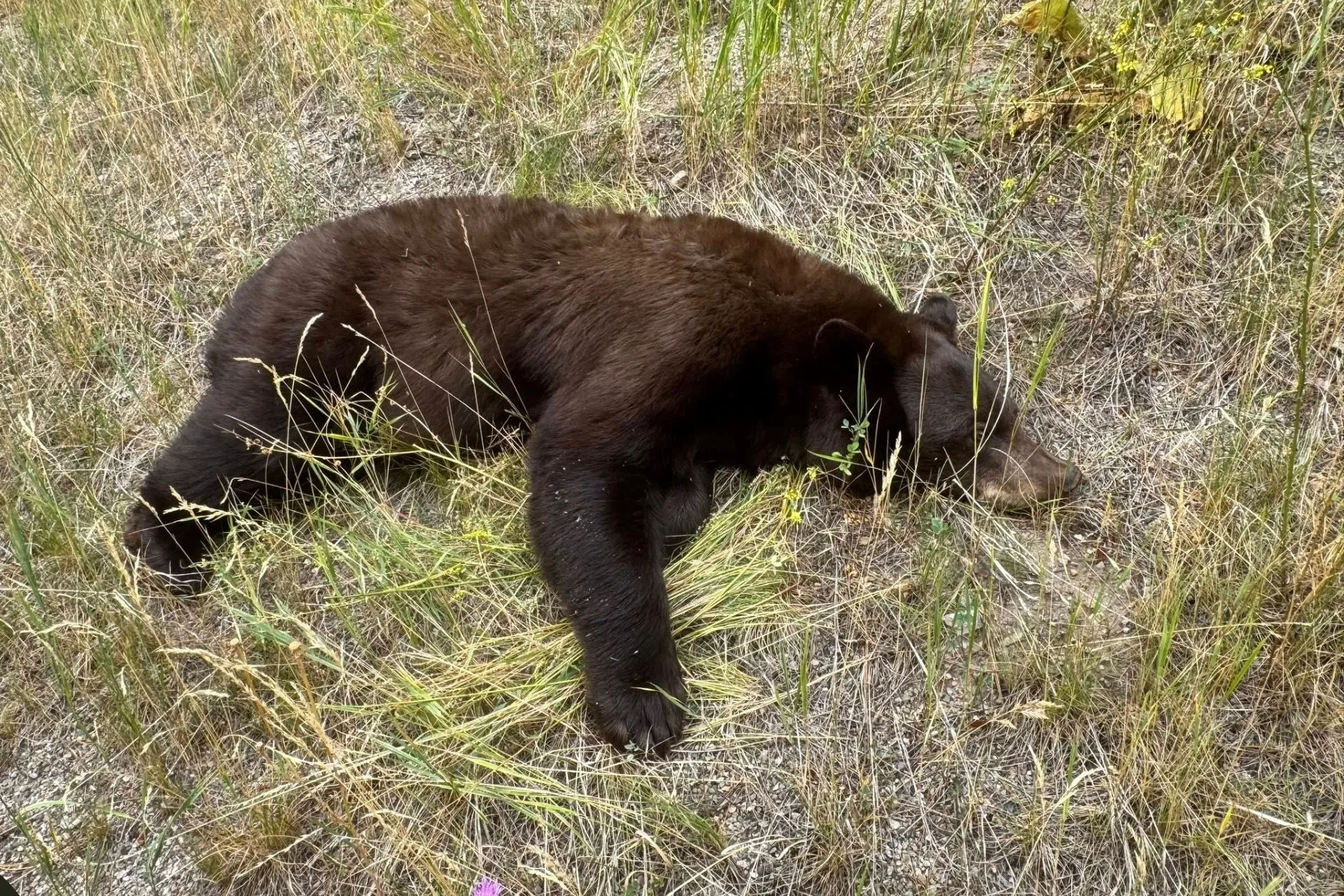Last weekend, a motorcyclist had a brush with fate that could have ended very differently. While traveling down Colorado’s Million Dollar Highway at about 80–85 mph, Jordan Bender‘s dad struck a bear that darted up the embankment and directly into his path, according to a post he made in a social media group.
His dad had only a split second between spotting the bear’s head and the impact. Remarkably, he survived with only minor road rash and a dislocated shoulder — injuries that, given the circumstances, seem almost miraculous. Survival statistics paint a much grimmer picture: at 60 mph, the survival rate in motorcycle-animal collisions is around 20% or less, and above 80 mph, it drops to below 1%.
As for the bear, it appears it did not survive, as it is pictured above.
Wildlife on the Move
Montana, like Colorado, is home to all types of wildlife and miles of scenic highways. Encounters between vehicles and animals — from deer to elk to bears — are common, particularly during dawn and dusk when animals are most active. According to Montana Fish, Wildlife & Parks, thousands of wildlife-vehicle collisions are reported every year, with deer being the most frequently involved species. Bears and moose, while less common, pose a greater danger due to their larger size.
Motorcyclists are especially vulnerable. Without the protection of a vehicle’s frame, even smaller animals can cause life-threatening crashes. The Million Dollar Highway, much like Montana’s Beartooth Pass or Going-to-the-Sun Road, combines incredible views with sharp curves, blind spots, and wildlife crossings — a risky mix.

Preventing Wildlife Collisions
While not every accident is avoidable, riders and drivers can reduce their risk by following some best practices recommended by Montana officials and road safety experts:
- Reduce speed in high-risk areas. Roads near rivers, forests, and open meadows are prime wildlife habitats. Slowing down improves reaction time.
- Stay alert at dawn and dusk. These are peak hours for wildlife movement.
- Watch for “shadows” or movement on the roadside. Animals often appear suddenly, especially on curving mountain highways.
- Avoid swerving. Collisions are sometimes less deadly than losing control while trying to dodge an animal.
- Gear up. Protective equipment — helmets, armored jackets, and gloves — can mean the difference between walking away and severe injury.

This accident is a reminder of the risks that come with riding in wildlife country. The rider’s ability to tuck and roll after going down may have helped save his life. However, speed and unpredictability don’t mix when animals share the road.
Montana, Colorado, and other states with rich wildlife populations will always have an element of unpredictability for travelers. Respecting speed limits, staying alert, and understanding the risks can help ensure that close calls remain stories — not tragedies.
Also, with everybody having an opinion on everybody else’s actions and lives, it doesn’t matter what people would’ve and could’ve done–it is just a good thing he survived, and it is a good thing he was geared up!



